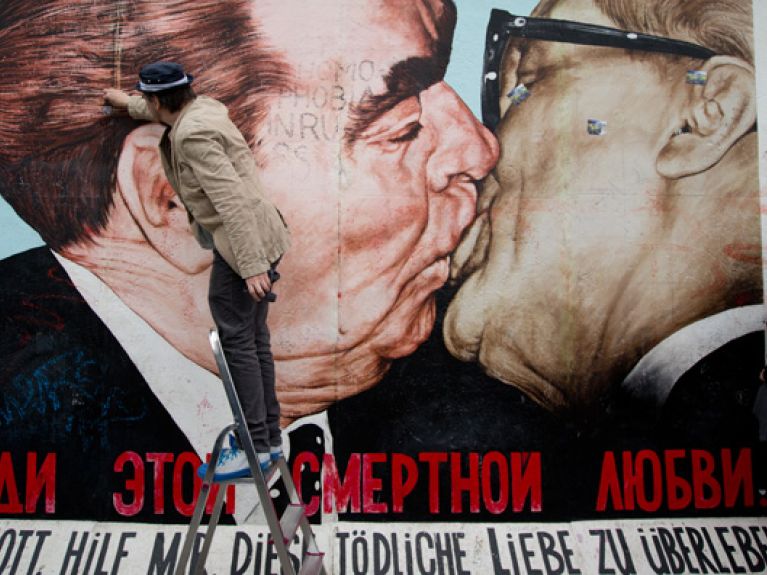The Berlin Wall in the world
Fragments of the former border are found on all continents today.

After the fall of the Wall, people in Germany couldn’t wait to get rid of its remains. They wanted the time of division – including all its symbols – to become a thing of the past. As a result, the Wall, which divided East and West for over 28 years after its construction began on 13 August 1961, has largely disappeared from Berlin. When the realisation came that commemoration requires a location, it was almost too late. Only a few fragments still remain, such as the East Side Gallery, and these have now been linked into a tangible memorial landscape.
Monument, work of art, marketing instrument
The attitude was very different outside Germany: remnants of the former border were highly sought-after – by museums, artists, governments and people who associated personal memories with the Wall. Subsequent German commemorative efforts also led to individual sections being distributed all over the world today – and to a certain extent even beyond that. You will encounter them in the Australian capital Canberra, at the shrine in Fátima in Portugal, at the German School in Mexico City and at the CIA headquarters in Langley. Countries like Argentina use parts of the Wall to create a symbolic bridge to their own experiences of dictatorship, companies decorate their lobbies with historic symbols and a restaurant in Portland, Maine, claims it has “the best lobster on the East Coast and a piece of the Berlin Wall”. And although they may not be original Wall segments, on Mars there are rocks and boulders that have been named Broken Wall, Nikolaikirche, Monday Demo and Reunification at the instigation of German researchers.
The Federal Foundation for the Reappraisal of the SED Dictatorship has listed 146 international Wall sites in its book Die Berliner Mauer in der Welt (The Berlin Wall in the World) and described how each segment found its way to its new location. That is sometimes not easy. For example, it was not possible to conclusively prove whether the Wall segment that the king of Tonga acquired at an auction in 1990 ever arrived. On the other hand, you cannot overlook the pieces of the Wall in an artist’s garden in Jakarta. The planned art project was never realised, but the concrete giants still act as a memorial nonetheless.

